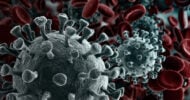by Kristina Fiore
Medical imaging for cancer patients and resulting costs have increased over the last decade, particularly in positron emission tomography (PET), researchers have found.
Annually, use of the diagnostic screen rose significantly between 1999 and 2006 — ranging from 36% in lung cancer to 54% in breast cancer, Kevin A. Schulman, MD, of Duke University, and colleagues reported in the April 29 Journal of the American Medical Association.
Imaging costs also increased, outpacing the rate of increase in total costs among Medicare beneficiaries with cancer, they said.
Use of imaging in cancer has been increasing because of emerging technologies, changes in diagnostic and treatment patterns, and changes in Medicare reimbursement.
To examine those changes and how they’ve affected the overall cost of cancer care, the researchers assessed a nationally representative 5% sample of claims from the Centers for Medicare and Medicaid Services (CMS) from 1999 through 2008.
All patients had some type of cancer, including breast, colorectal, lung, or prostate cancer or leukemia or non-Hodgkin lymphoma. There were 100,954 cancer cases in all.
The researchers found significant annual mean increases in imaging use among all cancer types, particularly PET scans:
* Positron emission tomography (35.9% to 53.6%)
* Bone density scans (6.3% to 20%)
* Echocardiograms (5% to 7.8%)
* Magnetic resonance imaging (4.4% to 11.5%)
* Ultrasound (0.7% to 7.4%)
The use of computed tomography (CT) also increased in all cancer subgroups except lymphoma (4.5% to 7.6%).
The use of conventional radiographs decreased or stayed the same in each cancer subgroup but remained the most heavily used modality for all diagnoses, at a mean of 4.3 to 12.2 procedures per patient, the researchers said.
Patients with lung cancer or lymphoma had the largest increase in PET use.
“This rapid increase is largely due to the expanding number of indications for PET since the technology was approved in 1998 for the characterization of single pulmonary nodules and initial staging of non-small cell lung cancer,” they wrote.
Those with lymphoma or lung cancer had the largest number of imaging procedures. By 2006, for example, the average patient with lung cancer had 11 conventional radiographs, six CT scans, a PET scan, a separate nuclear medicine test, an MRI, two echocardiograms, and an ultrasound — all within two years of diagnosis.
Patients with these two conditions also incurred the largest overall imaging costs, exceeding a mean of $3,000 per beneficiary within two years of diagnosis.
Overall, the researchers said, mean two-year imaging costs per patient increased at a rate greater than the increase in mean total costs per patient for all cancer types.
Still, as of 2006, imaging costs accounted for only a small fraction — 6% — of total Medicare cancer costs.
Nevertheless, the researchers wrote, the federal government has been cautious about increases in imaging costs. For example, the new healthcare reform law aims to reduce imaging expenditures by lowering payment for imaging tests.
The authors noted that their study was limited by the accuracy of claims data.
Kristina Fiore is a MedPage Today staff writer.
Originally published in MedPage Today. Visit MedPageToday.com for more oncology news.











![Working patients and health care [PODCAST]](https://www.kevinmd.com/wp-content/uploads/Working-patients-and-health-care-190x100.jpg)
![Supporting medical resident families [PODCAST]](https://www.kevinmd.com/wp-content/uploads/Supporting-medical-resident-families-190x100.jpg)


![A tribute to primary care [PODCAST]](https://www.kevinmd.com/wp-content/uploads/A-tribute-to-primary-care-190x100.jpg)
